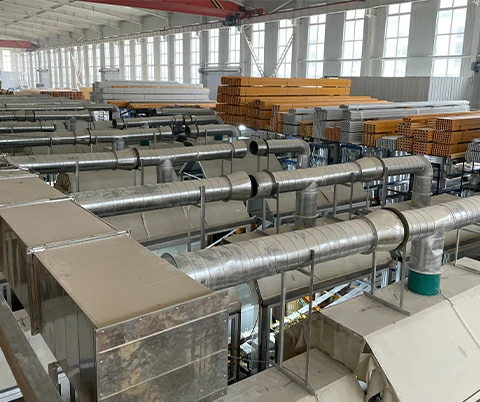loading...
- No. 9, Xingyuan South Street, Dongwaihuan Road, Zaoqiang County, Hengshui, Hebei, China
- admin@zjcomposites.com
- +86 15097380338
- Welcome to visit our website!
grp grating panels
The Versatility of GRP Grating Panels
GRP (Glass Reinforced Plastic) grating panels have emerged as a leading choice in various industrial and commercial applications. Renowned for their combination of strength, lightweight, and resistance to environmental factors, GRP grating panels offer a wide array of benefits that cater to diverse needs. This article explores the features, advantages, and applications of GRP grating panels.
What are GRP Grating Panels?
GRP grating panels are constructed from glass-reinforced plastic, which provides them with a robust structure while remaining exceptionally lightweight. These panels are typically manufactured through a molding process that integrates glass fibers within a resin matrix, resulting in a durable and non-corrosive material. GRP grating can be produced in various sizes and configurations, allowing for versatility in installation.
Key Features and Benefits
One of the foremost advantages of GRP grating panels is their corrosion resistance. Unlike traditional metal grates, which can succumb to rust and degradation when exposed to harsh environments, GRP panels maintain their integrity over time. This property makes them ideal for use in environments such as wastewater treatment plants, chemical processing industries, and coastal applications where saltwater and chemicals can cause significant wear and tear.
Additionally, GRP grating panels are non-conductive and non-magnetic, making them suitable for environments where electrical hazards might be a concern. Their slip-resistant surface enhances safety, reducing the likelihood of accidents in workplaces where foot traffic is heavy or where there is exposure to liquid spills.
grp grating panels

The lightweight nature of GRP panels also contributes to ease of installation. They can be cut and shaped on-site, which eliminates the need for heavy lifting equipment. This feature can significantly reduce labor costs and installation time, allowing projects to progress more efficiently.
Applications of GRP Grating Panels
The applications of GRP grating panels are extensive, reflecting their versatility. They are widely used in industrial settings such as power generation plants, oil and gas facilities, and manufacturing plants. In these environments, the panels serve as flooring, walkways, and access platforms, enduring heavy loads while providing safety and stability.
Moreover, GRP grating panels have gained popularity in outdoor settings, including pedestrian walkways, bridges, and viewing platforms. Their resistance to UV radiation minimizes fading and degradation, ensuring they maintain their appearance and structural integrity over time. Furthermore, the open-grid design of the panels facilitates drainage, preventing water accumulation and reducing the risk of slip hazards.
In the context of environmental sustainability, GRP panels contribute positively as well. Their longevity reduces the need for frequent replacements, and they can be manufactured with recyclable materials, thus minimizing their environmental footprint.
Conclusion
In summary, GRP grating panels represent a modern solution for a multitude of applications across various industries. Their combination of durability, lightweight construction, and resistance to environmental factors makes them an attractive choice for both new installations and renovations. As industries continue to evolve and demand more sustainable and resilient materials, GRP grating panels stand out as a viable option that meets and exceeds these requirements. Whether used in industrial facilities or outdoor applications, the benefits of GRP grating panels are clear, making them an essential component of contemporary infrastructure.
-
The Rise of FRP Profiles: Strong, Lightweight, and Built to LastNewsJul.14,2025
-
SMC Panel Tanks: A Modern Water Storage Solution for All EnvironmentsNewsJul.14,2025
-
GRP Grating: A Modern Solution for Safe and Durable Access SystemsNewsJul.14,2025
-
Galvanized Steel Water Tanks: Durable, Reliable, and Ready for UseNewsJul.14,2025
-
FRP Mini Mesh Grating: The Safer, Smarter Flooring SolutionNewsJul.14,2025
-
Exploring FRP Vessels: Durable Solutions for Modern Fluid HandlingNewsJul.14,2025
-
GRP Structures: The Future of Lightweight, High-Performance EngineeringNewsJun.20,2025
